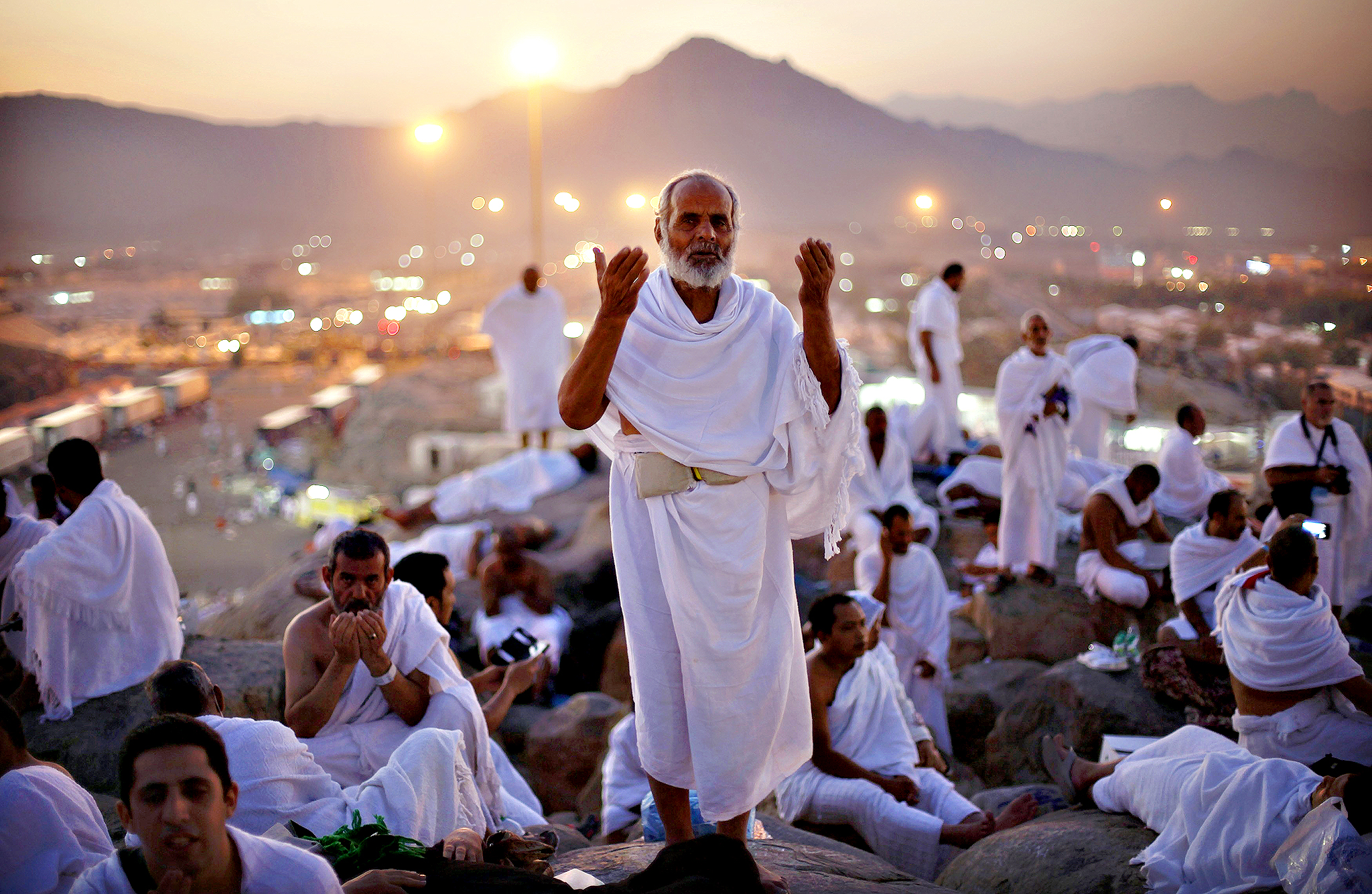By Dr Muhammad Salama
Islam, being the religion of total submission to Allah alone, has tawheed[1] as a central concept around which all other elements revolve. In other words, we can fairly say that tawheed is the essence that has various manifestations in a variety of teachings and commandments and is further supported by acts and rites of worship. An insightful reflection on such teachings and rituals reveals how tawheed dominates the life of Muslim individual as well as the life of the Muslim community. A Muslim, thus, has to be ever mindful of this concept lest he/she slips into any practice that contravenes it.
Hajj, a worshipful tradition handed down from Prophet Abraham, the upright, faithful monotheist who first called humanity to observe it, is a spiritual experience where this sense of tawheed is highly emphasized in the sincere observance of its symbolic rituals that are meant to enhance this concept.
In the very beginning, a pilgrim commences the rituals with a proclamation, known as talbiyah, in which a Muslim declares, in contrast to the pre-Islam pagan proclamation, sincere compliance and obedience to Allah and renounces all other false gods associated with Him.
Circling around the Ka`bah and traversing between the sites of Hajj (Mount `Arafah, Muzdalifah, and Mina) remembering and imploring Allah, as prescribed by the Messenger of Allah (peace and blessings be upon him), are also manifestations of such declaration of tawheed.
Arab idol-worshipers had quite similar rites but in pagan forms and with polytheistic intentions and practices since they had altered the monotheistic traditions of Abraham. When Islam came and gained control over Makkah, it abolished paganism and revived the true practices of Hajj.
The rites of shaving the head and flinging pebbles at the pillars known as jamarat are also expressions of total submission to Allah and denunciation of evil.
When slaughtering the sacrificial animals, a Muslim pilgrim has to bear in mind that,
{Never shall [any part of] their flesh nor their blood reach God. But rather, it is [your devotion- inspired by the] fear of God in you- that reaches Him. Therefore has He subjugated them to you, that you shall extol God, [the Creator] for [the blessing of faith to] which He has guided you.} (Al-Hajj 22:37)
In the same quranic chapter, surat al-Hajj, the Qur’an reminds of Allah’s direction to Abraham after guiding him to raise the foundations of the Sacred House,
{You shall not associate anything with Me [as a god]. And you shall purify My House for those who circle round it [in My worship], and those who stand upright, and those who bow and prostrate themselves [in the Prayer].} (Al-Hajj 22:26)
The purification intended is not restricted to physical defilements but extends to all signs of polytheism that might defile the sacredness of the House of the One God. The verses continue to assert this meaning citing some ritual practices and then command,
{So shun the abomination of idol-[worship]. Moreover, shun speaking any false word, being ever upright [of heart] toward God without associating anything with Him [in worship].}
Then comes the formidable portrait
{For whoever associates gods with God is like one who has fallen from heaven, whom birds then snatch [midair into pieces]; or whom the wind blows to a far-off place.} (Al-Hajj 22:30-31)
Yet, this alarming warning against any symptom of polytheistic practice in such worship is unfortunately neglected by many Muslim pilgrims who may slip into such practices out of ignorance.
For example, some people believe that the Black Stone has some effect or blessing and this is why they fight to touch it and then rub their hands over their bodies and their children. Umar ibn al-Khattab was aware of such false beliefs when he said, after kissing it,
“I know that you are only a stone that brings neither benefit nor harm. Had it not been that I saw the Messenger of Allah (peace and blessings be upon him) kiss you, I would not have kissed you.”
The same is done with the walls of the Ka`bah and its cover, the Station of Abraham, and the rocks of Mount `Arafah. Other similar wrong practices include the collection of stones and dust from around the Sacred Mosque and other sites of Hajj rituals to take them home thinking that such things have special blessings in addition to the polytheistic forms of supplication that involve speaking to the Messenger of Allah and asking him to fulfill one’s needs.
Furthermore, some pilgrims travel to Medina with the intention of visiting the Prophet’s grave to seek blessings. The proper practice, however, is to travel with the intention of praying in the Prophet’s Mosque where the reward of prayers is multiplied and while being there one may visit his grave as well.
The principle in this regard is to follow the exact tradition of the Messenger of Allah without much exaggeration and to understand that the observance of all such rituals is meant to manifest the pilgrim’s firm monotheistic belief in Allah, the One who has commanded to observe them.
This should provoke every Muslim to purify his/her intention to be entirely sincere for Allah (exalted is He) and to search for the prophetic tradition concerning the rites of Hajj in order to avoid such wrong practices.
May Allah guide all Muslim pilgrims to a proper and acceptable Hajj.






 WhatsApp us
WhatsApp us 


1 comment
Millions of Muslims are attracted to the holy grave of the Holy Prophet Muḥammad throughout the year, thus making it the most frequently visited grave in the world (May the peace and blessings of God be upon the Holy Prophet Muḥammad.)